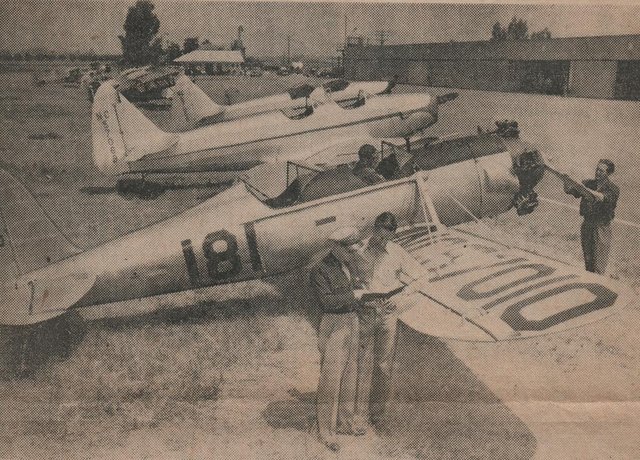Flying Taught Here In From 8 To 12 Hours (San Jose News 1945)

William Donald Hightower Sr. as 17 year old flying student at Reid’s Hillview Airport 1945
Those who knew and flew with my dad during his 60 + year flying career should especially appreciate this article from over 70 years ago.
Flying Taught Here In From 8 To 12 Hours (San Jose News 1945)
(from personally scanned newspaper clipping)
Flying instruction is now available to civilians at Orcutt’s Flight Service at Reid’s Hillview Air Field, East of San Jose. Don and Harold Orcutt, operators of the Service, report that it takes less than a dozen hours of instruction to learn to solo and costs a little over $100. Shown above, left to right, are Don Orcutt and Bill Hightower, student pilot; Harold Orcutt Jr., in the cockpit, and Harold Orcutt Sr., spinning the propeller on the plane in the foreground. --- San Jose News photo.
By PATRICIA LOOMIS
It takes only 8 to 12 hours to learn to fly.
Some 30 flying students are now receiving flying instructions at Orcutt’s Flight Service School, Reid’s Hillview Air Field, on the east side of San Jose, and most will be ready to solo after less than a dozen hours of instruction, according to Harold Orcutt, who with his brother, Don, operates the Flight Service.
Planes used in the war training program --- Aeroncas, Ryans and Fairchilds --- are used in instructing students at the field, Orcutt said, and the school is operated in accord with the wartime ruling against pleasure flights.
TWO INSTRUCTORS
The school has two instructors, Miss Florence Emig, daughter of Sheriff William J. Emig, and Don Orcutt. Miss Emig, former member of the San Jose State College Flying Club, taught flying at the Reno Flying School, Nev., and was graduated from the Ferry Command School, Air Transport Service, in Texas last December.
Don Orcutt was a civilian flying instructor at Thunderbird Army Air Field, Ariz., for over two years before coming to San Jose last March to open the first civilian flying school since the Army stopped civilian aviation on the Coast shortly after Pearl Harbor.
There are seven planes available at the school, with from 65 to 175 horsepower, Harold Orcutt said. He served in the AAF over four years in the 1920’s as a parachute rigger and station meteorologist. After leaving the Air Corps, and up until a year ago, he operated a string of “juke” boxes in this area.